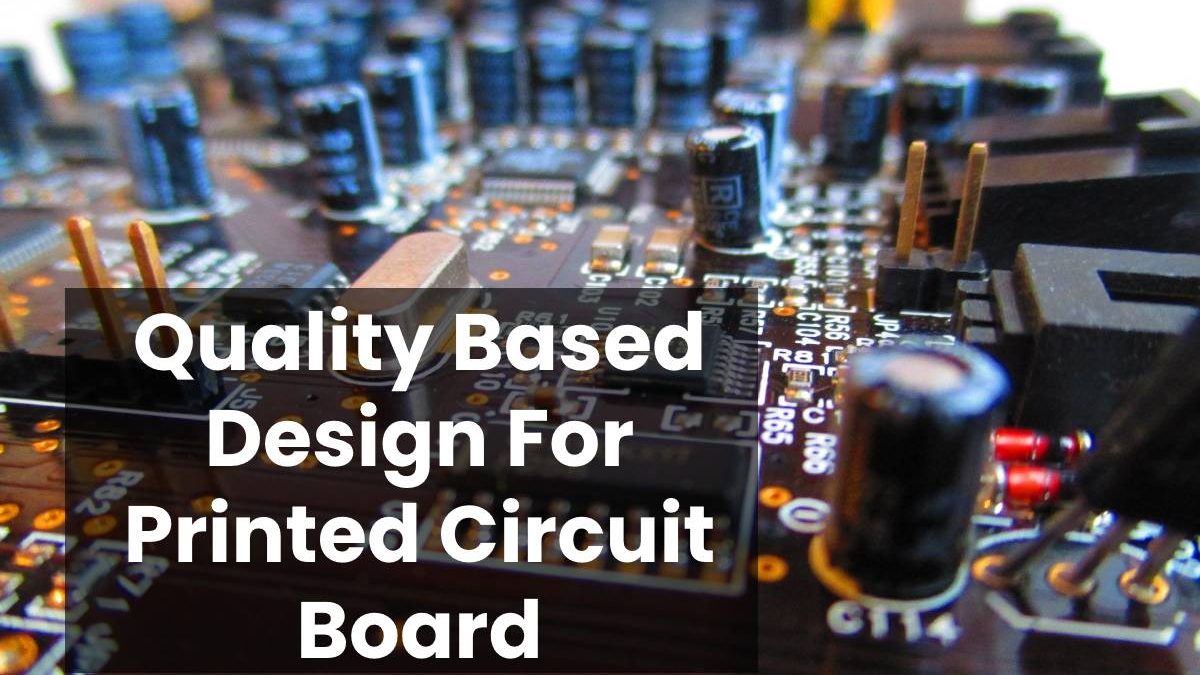Design For Printed Circuit Board
PCBs: Printed Circuit boards are groundwork building blocks of modern electronic devices. Printed Circuit boards are boards that have pads and lines in which various points connect. PCB electrically connects electronic components by using conductive tracks and other features. PCB assembly transfers electronic signals between different parts of electronic devices like computers, laptops, mobiles, etc.
It is made up of small electronic components like resistors, inductors, capacitors, and many others.
FR stands for Fire Retardant,It is a substance that is used to stop or slow down the spread of fire or reduce its intensity. FR-4 pcb thickness is a material that is used in making Printed Circuit Boards. It is the most important material that is used for many applications.
FR 4 pcb thickness has good mechanical properties which means that It is a glass fiber epoxy layer. It has good resistance to polluting elements. For quality-based design, eight layers of glass fiber material are used in the manufacturing of Printed Circuit Boards. The maximum surrounding temperature is between 120 degrees Celsius and 130 degrees Celsius, depending on the thickness of FR 4 sheets.
fr4 pcb thickness is the most upper-quality material which is used in PCB fabrication. FR 1 and FR 2 sheets are not good for passing through holes because these are single-layer sheets. FR 3 is also not recommended for manufacturing PCBs as it has no good resistance to moisture elements. For quality-based manufacturing of Printed Circuit Boards,it is essential to make it with eight layers of FR 4 sheet. FR 4 has a crystalline state of the material with hard plastic like polystyrene when they are in their glassy state.
The capacitor is the most important component of Printed Circuit Boards, it stores electrical energy in an electric field. It is made up of two metal objects separated from the material. Capacitors should be destabilizing frequency oscillation.
Table of Contents
Successful FR 4 material general properties are as follows:-
High glass transition temperature:-
The glass-liquid transition has the ability to change transitions in the shape of materials.It is always lower in melting temperature. It means FR 4 has good resistance to moisture and polluting elements.
Arc resistance:-
Arc resistance is the ability of the plastic material to resist the action of a high voltage of electrical arc.
Dielectric breakdown:-
The failure of an insulating material to prevent the flow of current under an applied electrical stress is called dialectical breakdown of Printed Circuit Boards under magnetic field.
Dielectric constant:-
Electric potential energy is measured by dielectric constant that is stored under the action of an electric field.
Dissipation factor:-
When engineers size up their choices for printed circuit board materials parameters are probably often overlooked. It describes performance of applications also known as loss tangent.
High decomposition temperature:-
Their compound decomposes easily at high temperatures but strong bonds are difficult to break. At high decomposition temperature when metals are near the bottom of the reactivity series, their compounds easily decompose.
Flexural strength:-
It is a material property defined as stress in a material just before it produces in a flexure test. It is also known as bend strength.
Solder mask:-
It is a protective layer applied on the top and bottom sides of a printed circuit board. The most usual thickness used is 1.6mm in PCB-FR 4. The sector of our industry uses a standard laminate of 1.6mm thick woven fiberglass.
The quality-based PCBs can be made if data is prepared by the right tools, using the right equipment, buying in the right material, designing and implementing the right processing, and hiring the right and hardworking operators. Trained operators can make highly profiled Printed Circuit Boards with FR 4.

